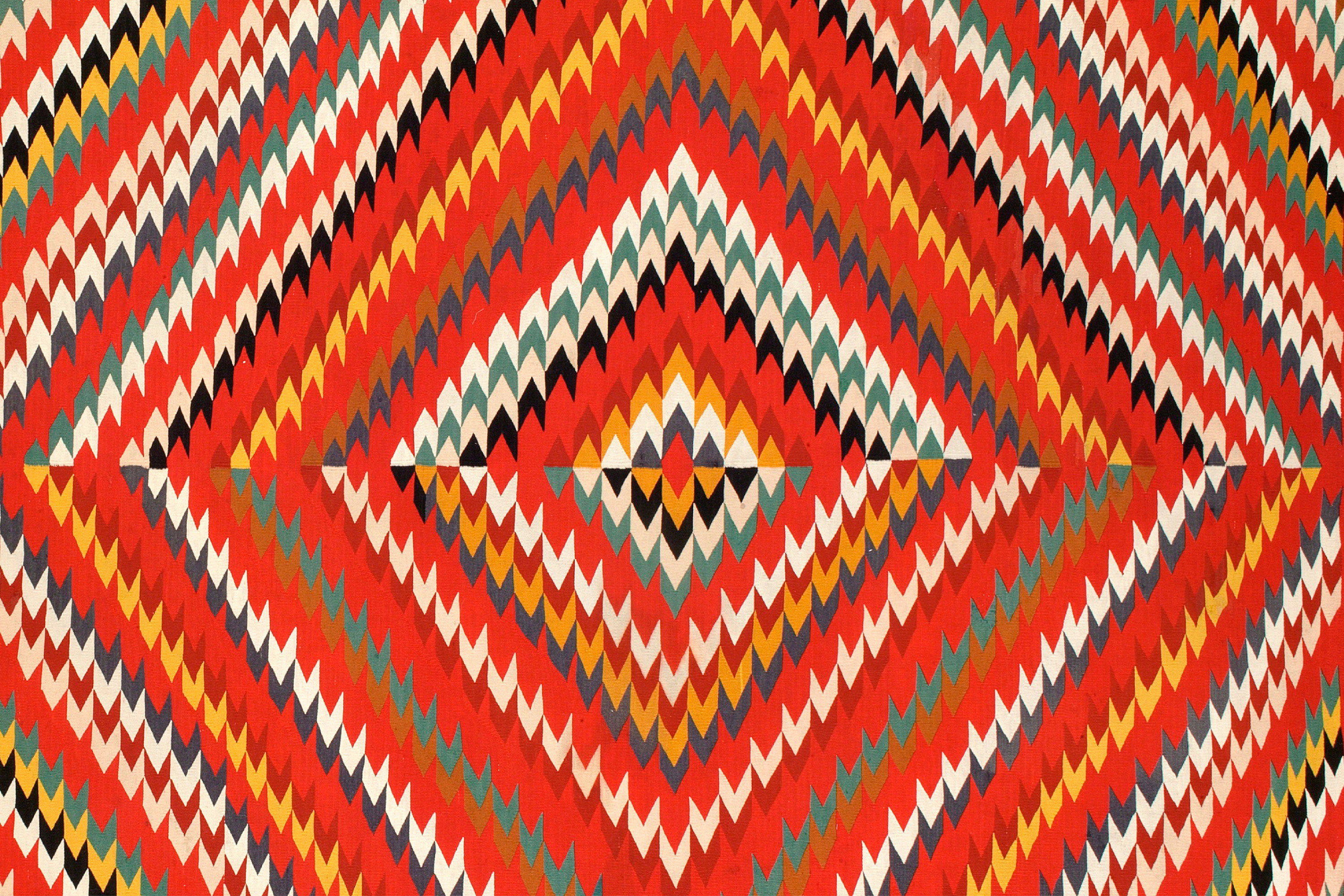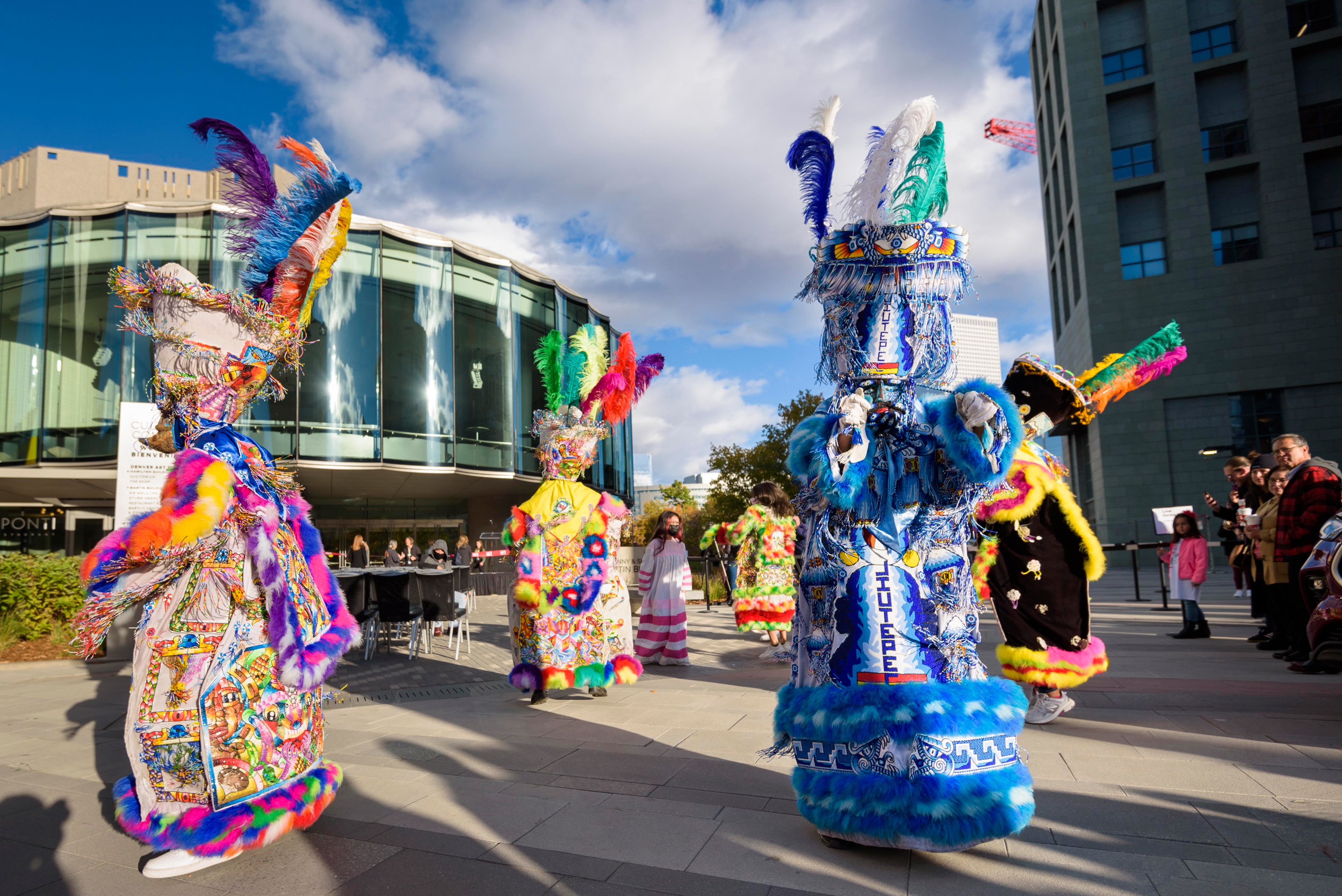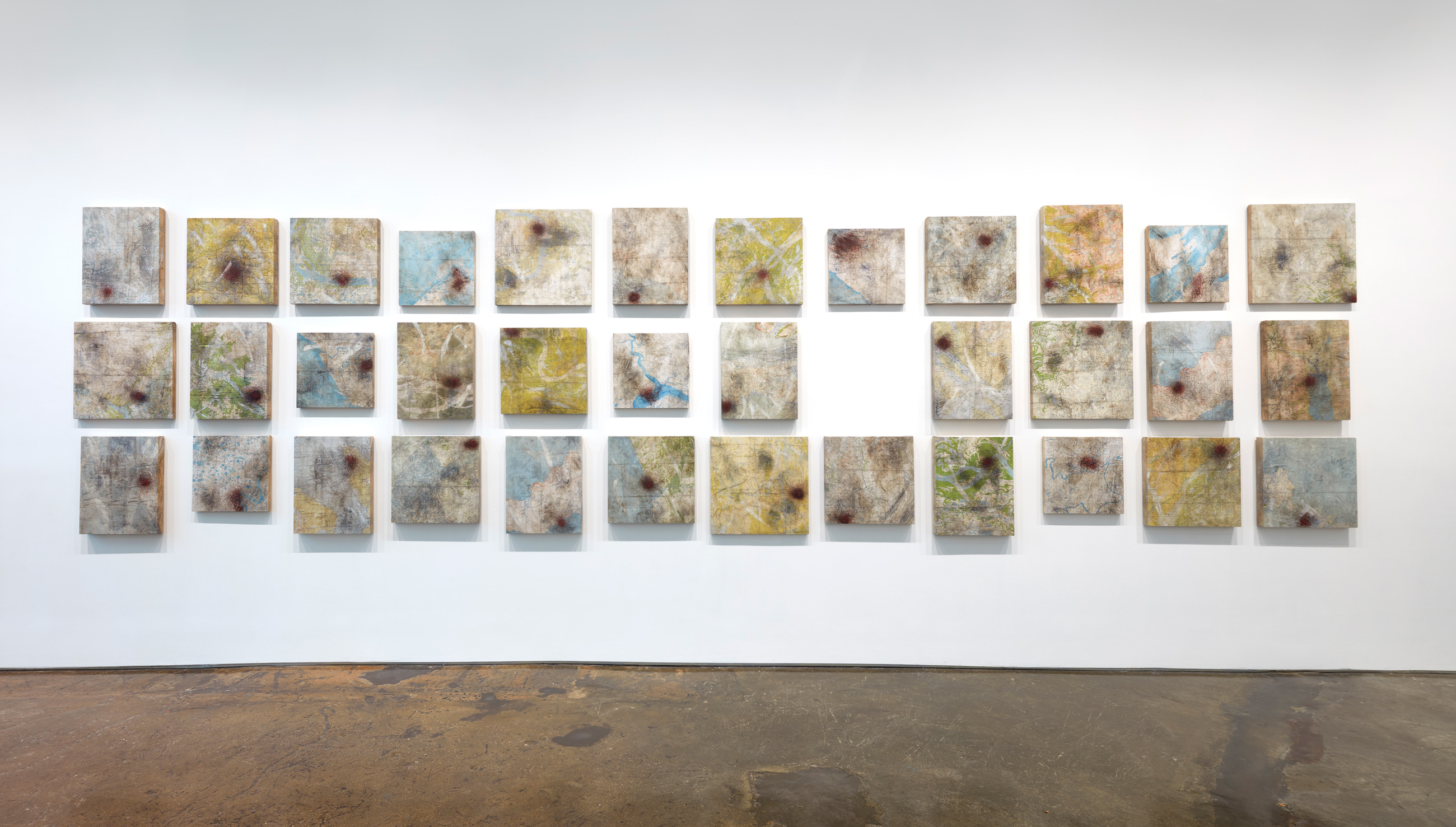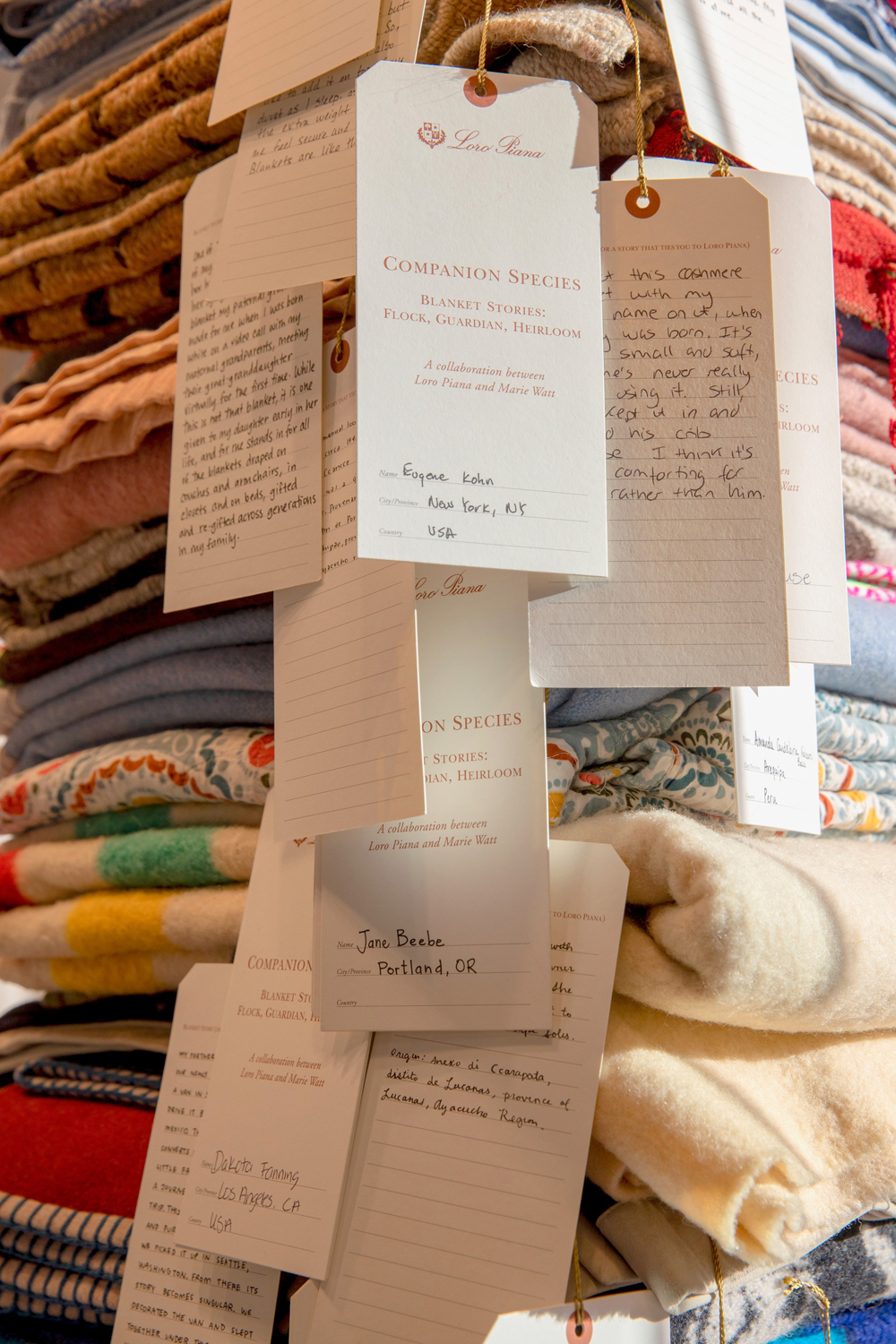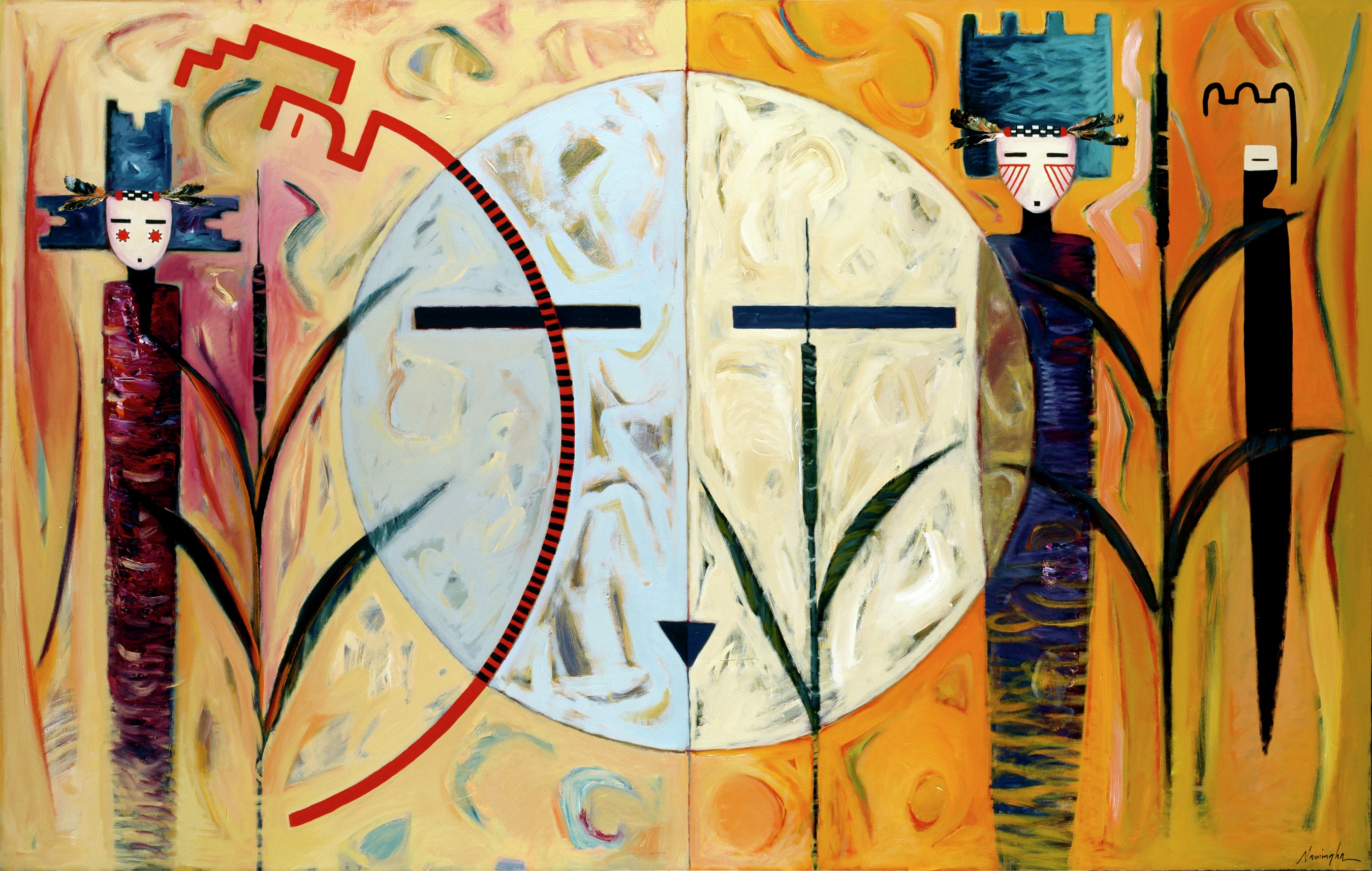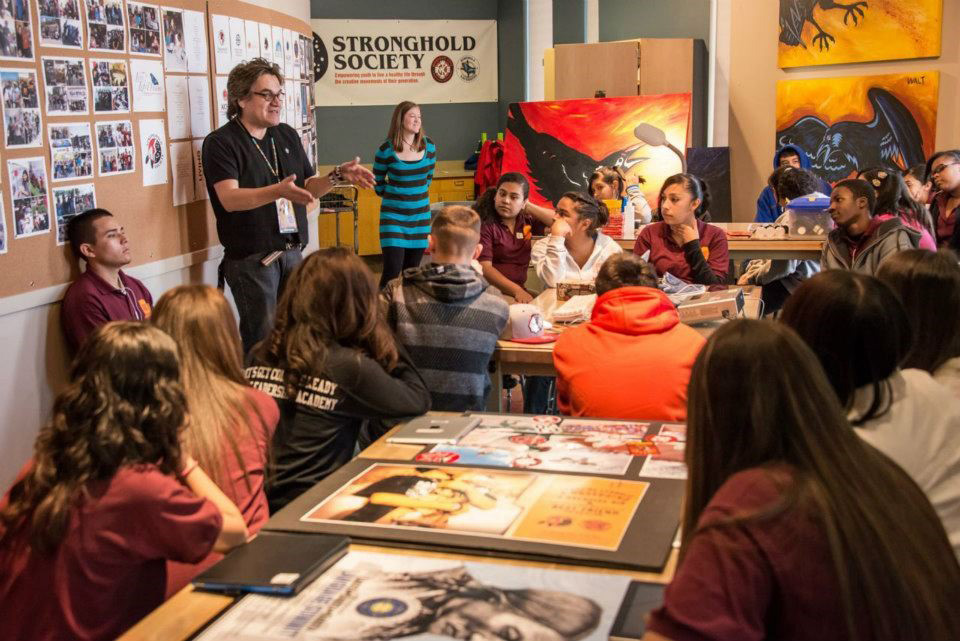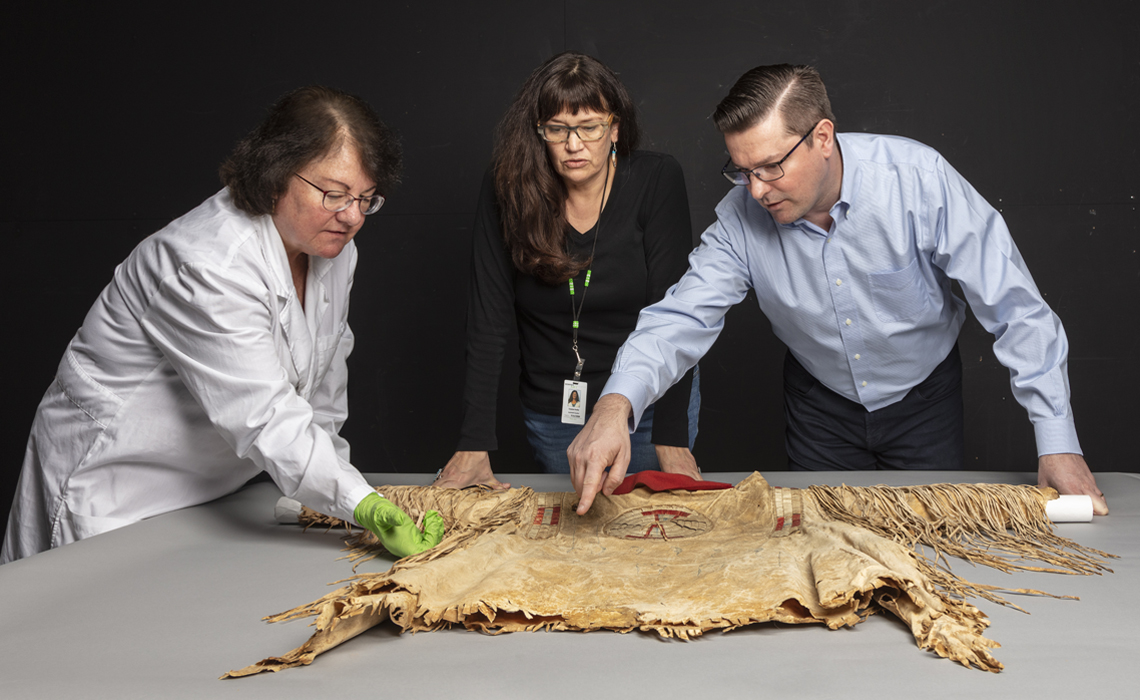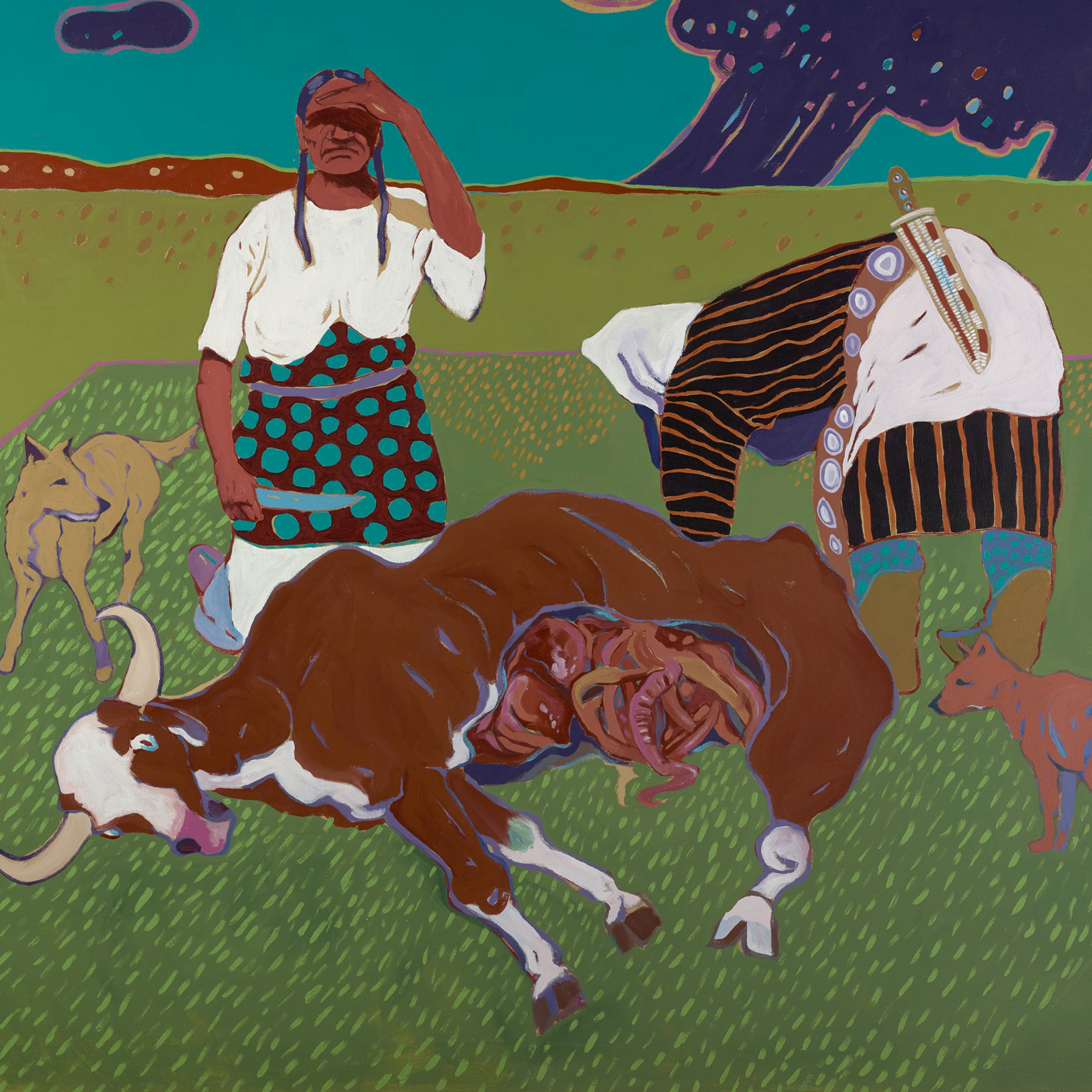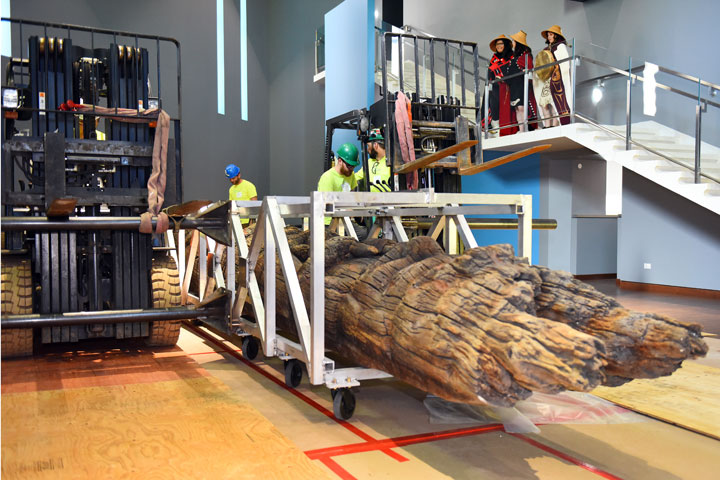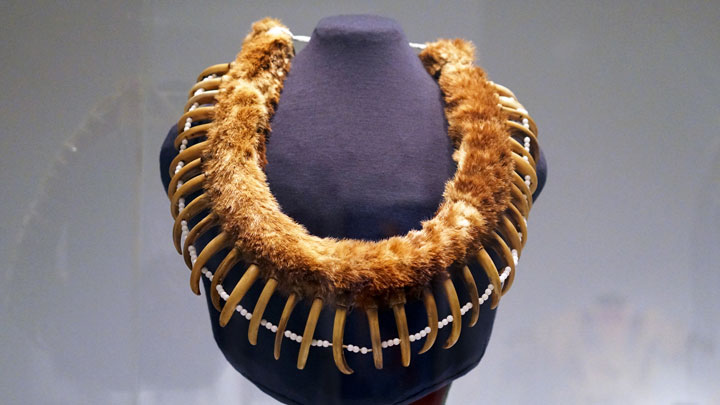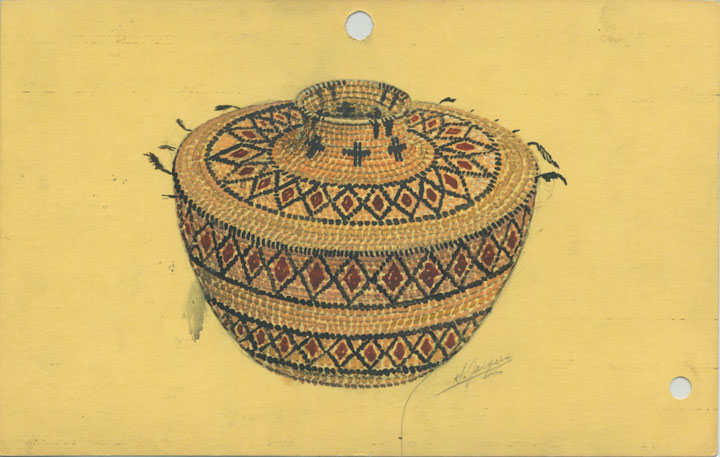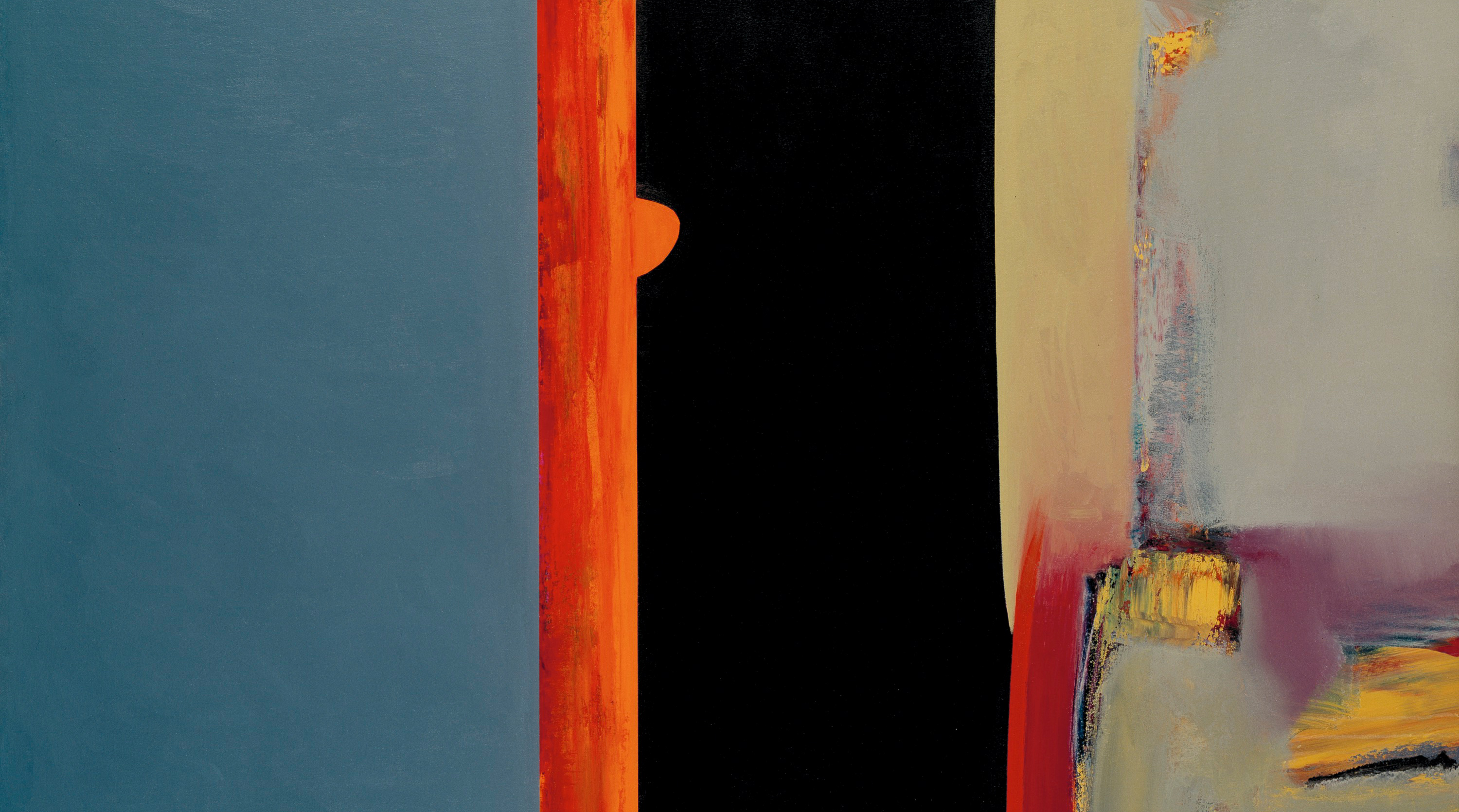
Collection Highlights
Explore objects from the Indigenous Arts of North America department in our online collection.
Department Staff
John Lukavic, Andrew W. Mellon Curator of Native Arts
As Andrew W. Mellon Curator of Native Arts at the DAM, John Lukavic conducts and presents scholarly research, develops exhibitions, collects Native arts, and disseminates knowledge of the DAM’s Indigenous arts of North America, African, and Oceanic collections. He was the organizing curator for the recent exhibitions Jeffrey Gibson: Like a Hammer (2018), Super Indian: Fritz Scholder, 1967-1980 (2015), and Revolt 1680/2180: Virgil Ortiz (2015), as well as lead curator for Eyes On: Julie Buffalohead and Stampede: Animals in Art. Lukavic received his PhD in cultural anthropology at the University of Oklahoma and his master's in museum science from Texas Tech University. In 2018, he was selected for the Getty Leadership Institute at Claremont Graduate University’s NextGen program for emerging top talent in the museum field. In 2019, he received an Award for Excellence from the Association of Art Museum Curators for his essay in the Jeffrey Gibson: Like a Hammer exhibition catalog. He serves on the board of directors for the Native American Art Studies Association, as well as for the Denver Indian Center, Inc.
Dakota Hoska, Associate Curator of Native Arts
Dakota Hoska is an enrolled member of the Oglála Lakȟóta Nation, Pine Ridge (Wounded Knee). She joined the Denver Art Museum in 2019. Previously, she worked as a curatorial research assistant at the Minneapolis Institute of Art supporting the exhibition Hearts of Our People: Native Women Artists. Dakota completed her master's in art history, focusing on Native American Art History at the University of St. Thomas, St. Paul, MN (2019). She also completed two years of Dakhóta language classes at the University of Minnesota (2016), and received her bachelor of fine arts in drawing and painting from the Minneapolis College of Art and Design (2012). Dakota’s curatorial work allows her to pursue her passions of working closely with her Native community while being continually surrounded by and learning about beautiful artwork.
Jennie Trujillo, Curatorial Assistant of Native Arts
Jennie Trujillo is the Curatorial Assistant of Native Arts at the Denver Art Museum. She has her master's degree in art history, with a museum studies concentration. Jennie has worked in collections in various museums around the Denver area for the past several years, including the Museo de las Americas, Lakewood Heritage Center, the University of Denver's Hampden Center, and most recently in collections at the Denver Art Museum. She joined the museum in 2015 as a gallery host and continued to work in Visitor Operations as supervisor until September of 2021, when she made the switch to the Native Arts department.
Danielle Stephens, Senior Interpretive Specialist
As a Senior Interpretive Specialist in the department of Learning and Engagement at the Denver Art Museum, Danielle Stephens specializes in the development of interpretive materials for the museum’s collections and special exhibitions. This includes labels, audio guides, videos, and participatory experiences that encourage visitors to create, share, and connect with each other and the work on view. She also hosts community advisory committees, conducts visitor evaluations, trains volunteer docents, leads gallery tours, and works with cross-departmental staff to deliver live programming related to the collection.
Since joining the DAM in 2013, Danielle has served as the interpretation lead for the Indigenous Arts of North America gallery reinstallation, along with the exhibitions Each/Other: Marie Watt and Cannupa Hanska Luger, Jeffrey Gibson: Like a Hammer, and Revolt 1680/2180: Virgil Ortiz. Prior to the DAM, Danielle worked as the Docent Program Manager at the Museum of Fine Arts, Houston and the Education Curator at the Aspen Art Museum. Danielle has her bachelor of fine arts from the University of Oklahoma in art history and photography, and a master’s in art history from Southern Methodist University.
Department History
The strength of any museum collection is largely driven by the vision, savvy, and motivation of the department’s curatorial team. Here at the Denver Art Museum, our Native arts department has had the good fortune of being under the guidance of some very strong visionaries, who were leaders in their field. We are proud of our legacy and take this moment to acknowledge the past curators and influencers who started us on our path.
The origin of the Native Arts department in 1925 is tied to the beginning of the Indigenous Arts of North America collection championed by Anne Evans, one of the founders of the DAM. She not only donated her own personal collection, but encouraged the support of friends with her enthusiastic and spirited patronage. These first years were led by curator Edgar McMechan (1925-1928). Four years later, in 1929, Frederic Huntington Douglas was hired. An art historian and anthropologist, he achieved national renown for his pioneering efforts to promote the understanding and appreciation of American Indian art as fine art and not solely artifact. During his nearly three-decade long career at the DAM (1929-1956), he assembled one of the most comprehensive collections of American Indian art, supported by a series of scholarly publications and groundbreaking exhibitions that influenced the direction of American museology, art history, and anthropology. During the 1930s, Douglas served as a commissioner on the Indian Arts and Crafts Board. In 1939 he worked with then IACB director René d’Harnoncourt and a few others to plan and direct the “Indian Court” at the Golden Gate Exposition. In 1941, he and d’Harnoncourt co-curated the landmark exhibition Indian Art of the United States at the Museum of Modern Art in New York. Douglas identified early the importance of working directly with Indigenous artists and making collections accessible to Indigenous communities. Over the course of his time at DAM he developed strong connections with such artists and community leaders as Ella Deloria (Yankton Dakota), Nampeyo of Hano (Hopi/Tewa), Mary Littlebear Inkanish (Cheyenne), and Maria Martinez (San Ildefonso). Douglas recognized the importance of collecting arts created at all points in time, which helped DAM develop strong collections of early and mid-20th century Indigenous arts. It was under the direction of Douglas that the DAM expanded the Native Arts collecting focus to include African and Oceanic arts (Douglas developed an interest in Oceanic arts while serving in the South Pacific during World War II). This foundational work set the tone for the direction of the Native Arts department.
Royal Hassrick then led the department from 1957 to 1962 before becoming DAM’s assistant director from 1964 to 1967. He was a prolific author and dedicated researcher. Prior to coming to DAM, he served as curator of the South Plains Indian Museum for the U.S. Department of Interior in Oklahoma from 1948 to 1952 and then assistant general manager of the Indian Arts and Crafts Board for the Department of Interior from 1952 to 1954. Like Douglas, Hassrick served as a commissioner on the Indian Arts and Crafts Board while a curator at DAM.
Norman Feder, a pioneer in the field of Native American art history and material culture, served as the curator of Native Arts at the DAM from 1961 to 1971. Feder had a deep interest in and a discerning eye for Indigenous arts. With a background as a hobbyist before coming to the museum, Feder belonged to a community of amateurs who specialized in the manufacture of artworks using Indigenous techniques and designs. While today such a background receives a critical response by Indigenous people, at that time his understanding of Native American techniques and styles allowed him to contribute meticulous, collections-based documentation to the study of Indigenous North American visual culture. It also allowed him to assist institutions in identifying what was and was not “authentic” in their collections. Through his passion, Feder inspired a new generation of anthropologists and historians of Indigenous material culture. During his time at DAM, Feder collected broadly and significantly expanded the museum's collections of African, Indigenous North American, and Oceanic arts.
Richard G. Conn served two non-consecutive terms at the DAM. The first predated Hassrick and Feder from 1956-1957, but Conn returned in 1972 as the curator of Native Arts, later advancing to become DAM’s first chief curator where he remained until his retirement in 1994. Conn brought with him an interest and understanding of Native Northwest Coast arts, fueled by his youth spent in Bellingham Washington, as well as a strong focus on Indigenous clothing. Over the course of his career, Conn, like his predecessors, became a generalist, and his publications eventually covered a wide range of topics related to the traditional clothing of Indigenous people, including the works of the Plains, Plateau, and Southwest regions as well as the history of glass trade beads in North America. He also helped start up the DAM Friendship Pow Wow in 1990 to serve and honor the local Native community. This Pow Wow has taken place every year since, including a virtual iteration in 2020 due to the COVID-19 pandemic.
Nancy Blomberg came to DAM in 1990 as an associate curator, tasked with carrying on the trail-blazing work of the previous foundational leaders. In 1993 she was promoted to curator and Native Arts department head, and was then promoted to DAM’s chief curator in 2011. With the endowment of the position of Native Arts department head in 2016, she became DAM’s inaugural Andrew W. Mellon curator of Native Arts. She led the department until her untimely death in 2018. Importantly, Nancy’s commitment to building relationships with Native communities took center stage in her curatorial practice, and she changed the way the Denver Art Museum valued Indigenous perspectives. Abandoning a persistent hierarchy, Blomberg began actively listening to Indigenous people as they shared their knowledge and wisdom with the institution. This led to a more nuanced and inclusive understanding of Indigenous material culture, and removed some of the hierarchies inherent in museums and often problematic for Native communities. In her tenure, Blomberg established the DAM as a leader in the implementation of the Native American Graves Protection and Repatriation Act (NAGPRA). She specialized in classic Navajo textiles and was recognized for her groundbreaking reinstallation of DAM’s Indigenous art galleries in 2011 which brought focus to Indigenous artist in many new ways.
Over the course of the department’s history, many others served as assistant and associate curators. Kate Peck Kent worked closely with Frederic Douglas as an assistant curator in the 1930s and 1940s before going on to have a highly successful career as an anthropologist specializing in Navajo and Pueblo textiles. David Irving was an assistant curator who worked with Richard Conn from 1979 to 1984 and was a specialist in Navajo textiles. Ryntha Johnson served as an assistant curator for a time before moving on to positions at the St. Louis Art Museum and the Denver Museum of Nature and Science. Rodger Echo-Hawk was assistant curator from 1994 to 2005 and was instrumental in working with DAM and various tribes on NAGPRA reviews and claims. During this time, he published Keepers of Culture which provides case studies on NAPGRA claims, and it remains a vital resource to tribes and museums today. Echo-Hawk is now a historian and published author. Moyo Okediji was DAM’s first assistant curator specializing in African arts from 1999 to 2008 and was instrumental in advancing scholarship and attention to DAM’s collection of African arts. He is now professor of African art and art history at the University of Texas, Austin. Polly Nordstrand was associate curator from 2004 to 2009 and was instrumental in bringing in key acquisitions of Indigenous contemporary art to the collection. This attention to contemporary art renewed DAM’s commitment to collecting such work and engaging living artists. Nordstrand is now curator of Southwest art at the Colorado Springs Fine Art Center at Colorado College. Additionally, the Native Arts department began a curatorial fellowship program in 2016 with funds from the Andew W. Mellon Foundation. Fellows have included Denene DeQuintal (2016-18), who has gone on to become assistant curator of Native American art at the Detroit Institute of Arts, and Christopher Patrello (2018-21), now at the Denver Museum of Nature & Science.
Today, John P. Lukavic leads the department as the Andrew W. Mellon Curator of Native Arts. He came to DAM in 2012 as assistant curator of Native Arts and was then promoted to associate curator and later curator. Dakota Hoska came to DAM as assistant curator of Native Arts in 2019. Together Lukavic and Hoska continue DAM’s long history of collecting, developing exhibitions, and scholarship, and both hope to continue and improve upon the good work started by their predecessors. The way in which we present Native arts at the Denver Art Museum is progressive, inclusive, and considerate of critiques of past museum practices. We encourage the integration of diverse arts into broader contexts to promote dialog and challenge our visitors to expand their understandings and appreciation for such arts.
Research and Symposia
The Denver Art Museum’s extensive research library consists of 20,000+ books and periodicals related to American Indian, First Nations, and Alaska Native arts and cultures. Additionally, the Native Arts department files include archival field notes and records from its nearly 100 year history.
Biannual Symposium on American Indian Art
Every other year the Native arts department hosts a symposium on topics related to American Indian art. Through this event the scholarly dialog on American Indian art is advanced.
Past symposia includes:
- Dressing for the Creator: Indigenous Art and the Power of Spectacle (March 29, 2022)
- Who Owns Culture? Appropriation and Appreciation in the Global Art World (February 23, 2019)
- In Dialogue: Fritz Scholder and the Art World (January 7, 2016)
- Art in Motion: Native American Explorations of Time, Place, and Thought (July 14, 2012)
Publication History
Recent DAM publications on American Indian art that the department has contributed expertise to include:
Companion to Northwest Coast and Alaska Native Art. Christopher Patrello, with Christoph Heinrich, John P. Lukavic, Gwaai Edenshaw, Marianne Nicolson, Sonya Kelliher-Combs, and Jaad Kuujus (Meghann O’Brien). Denver Art Museum, 2020.
Jeffrey Gibson: Like A Hammer. John P. Lukavic, with Glenn Adamson, Anne Ellegood, Jen Mergel, and Sara Raza. Denver Art Museum in association with Delmonico/Prestel, 2018.
Art in Motion: Native American Explorations of Time, Place, and Thought. John P. Lukavic and Laura Caruso with Kristin Dowell, Charlene Holy Bear, Aldona Jonaitis, Leena Minifie, Kent Monkman, and Daniel C. Swan. Denver Art Museum, 2016.
Super Indian: Fritz Scholder 1967–1980. John P. Lukavic, with Jessica Horton, Eric Berkemeyer, and Kent Logan. Denver Art Museum in association with Delmonico/Prestel, 2015.
Revolt 1680/2180: Virgil Ortiz. Edited by John Lukavic, essay by Charles King, foreword by Herman Agoyo. Denver Art Museum, 2015.
Grand Procession: Artistic Visions of American Indians, The Diker Collection at the Denver Art Museum. Lois Dubin. Denver Art Museum, 2010.
[Re]inventing the Wheel: Advancing the Dialogue on Contemporary American Indian Art. Edited by Nancy J. Blomberg. Denver Art Museum, 2010.
Action and Agency: Advancing the Dialogue on Native Performance Art. Edited by Nancy J. Blomberg. Denver Art Museum, 2010.
Breaking the Mold: The Virginia Vogel Mattern Collection of Contemporary Native American Art. Nancy J. Blomberg and Polly Nordstrand. Denver Art Museum, 2006.
Reflections of the Weaver’s World: The Gloria F. Ross Collection of Contemporary Navajo Weaving. Ann Lane Hedlund. Denver Art Museum, 1992.
Our Commitment to Indigenous Communities
The Denver Art Museum is located on the homeland of the Arapaho, Cheyenne, and Ute people, along with many people from other Indigenous nations that call this place home. Museums have benefited from the displacement of Indigenous people and the removal and historical misrepresentation of their arts, often resulting in deep harm to originating communities.
While we cannot change the past, we can change how we move forward. Indigenous people have made substantial impacts to our institution, and our identity is innately tied to the Native histories and contributions of Indigenous people past and present. This inspires and grounds us as we move forward in a better way
We commit to building authentic and sustained relationships with Indigenous people at multiple touch points across the museum; centering, elevating, and supporting Indigenous people in our programs and practices and providing meaningful access to our resources including collections, programs, tools, and spaces; and actively listening to and integrating Indigenous voices to grow as an inclusive and accessible space.
